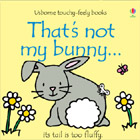 Blueberries for Sal by Robert McCloskey
Blueberries for Sal by Robert McCloskeyPic Source : Amazon
This is a very simple and cute story of a little girl Sal, who goes up the hills with her mother to collect blueberries. The mother carries her large tin pail with her to put the berries in, because she wants to can them for the winter. Little Sal also carries her small tin pail. As the mother collects the berries, so does Sal. Some she puts in her tin pail and some she gobbles up !! Here is a very catchy phrase used. "Little Sal picked three berries and dropped them in her little tin pail...kuplink, kuplank, kuplunk !". The words used to describe that sound of blueberries hitting the tin pail amused me as well as my son. We smiled every time we said those words aloud from the book :-).
As Mother sees that her pail is also getting emptied by Sal, she asks her to go by herself and eat some berries. Sal finds a nice clump of bushes having lot of blueberries and settles herself comfortably.
Meanwhile on the other side of the hill, a mama bear and a baby bear are also on a similar blueberry hunting expedition ! The mama bear tells the little one to eat lot of berries to stock up for the winter.
As the little bear and little Sal, wander away from their mothers they happen to land behind the other one's mother ! Mama bear thinks it is her little one trudging behind her, when she hears the"kuplink, kuplank, kuplunk" sound :-). Surprised she turns around and when she sees little Sal, she backs away. At this point I would like to point out the beautiful way in which the author has expressed mama bear's reaction on seeing Sal- She took one good look and backed away. She was old enough to be shy of people, even a very small person like Little Sal. The word "shy" got me thinking...I felt that the author has purposefully used this word rather than "scared" or" afraid", to get across significant messages to our children. Likewise when Mother finds that it is the little bear and not Sal behind her, she turns and walks away because she was old enough to be shy of bears, even very small bears like Little bear !!!
As Mama bear and Mother go around the hill looking for their respective wards they find them with that unmistakable hustling sound and the "kuplink, kuplank, kuplunk" sound :-).
Happily the two pairs go back home, having had their fill of blueberries !
This is a feel good and charming story for little kids. We got this book from our library. One observation that I made while looking at the illustrations was that the pictures of Mother, her kitchen, canning jars made me feel that it depicted the western countries of may be early fifties.(My image of that comes from watching TV !). So to satisfy my curiosity I checked the first publishing date..it is mentioned as 1948 !!!
The illustrations are completely in black and white.It is beautiful. Robert McCloskey has both written and illustrated this book. There are also more books written and/or illustrated by him. Most of them are either Caldecott Award or Caldecott Honor book.



